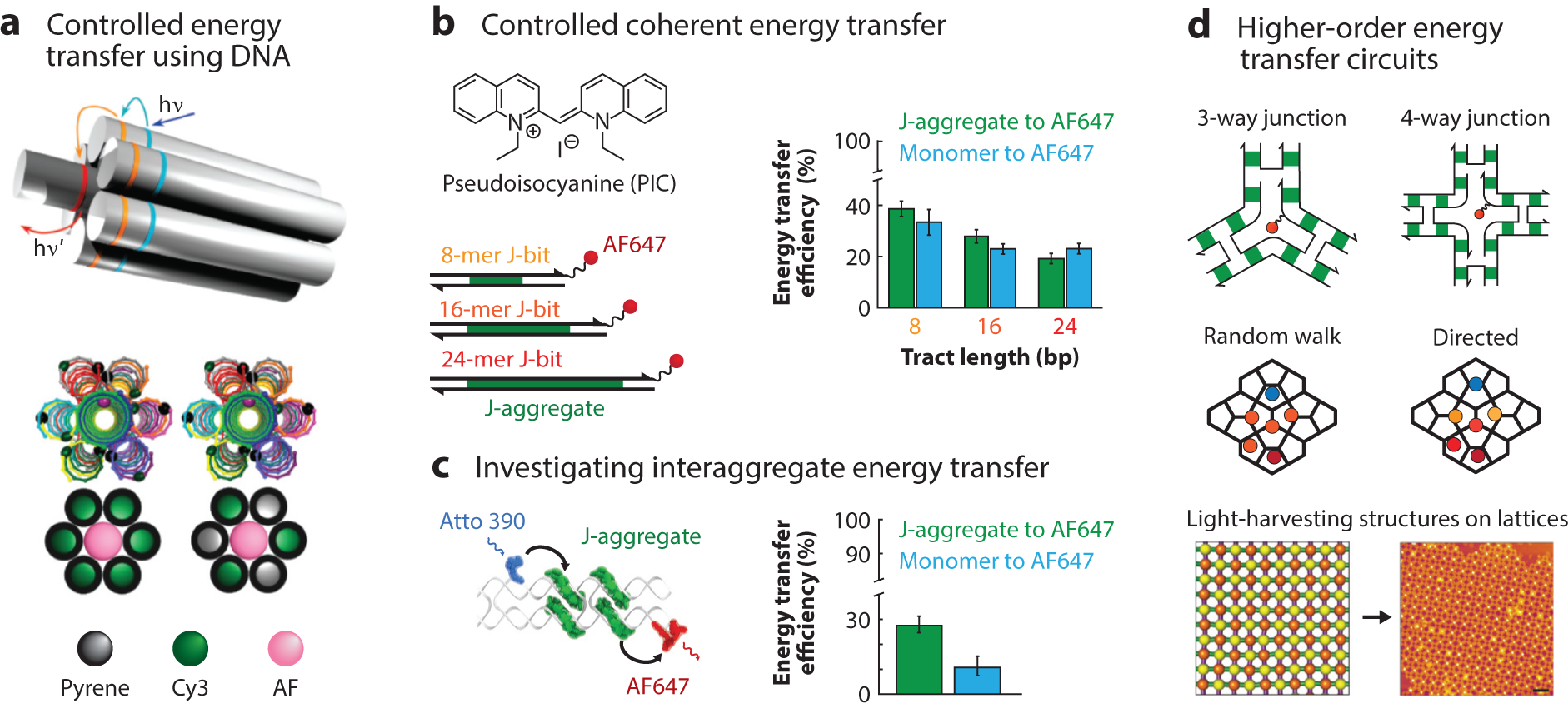Figure 4.

Biologically inspired artificial light-harvesting systems. (a) Three-dimensional energy transfer on DNA duplex bundles. DNA nanostructures enable the controlled variation of the distances and numbers of dyes scaffolded to investigate directed energy transfer. Adapted with permission from Reference 44. (b) The energy-transfer efficiency of DNA-templated PIC J-aggregates to Alexa Fluor® 647 decreases with the length of the DNA template due to static disorder. Adapted with permission from Reference 14. (c) The sequence-selectivity of PIC aggregation presents an opportunity to create higher-order excitonic circuits to understand the dynamics of interaggregate energy transfer. Adapted with permission from Reference 19. (d) DNA nanostructures can be leveraged as designer nanoscale scaffolds to understand energy funneling and directed energy transport mechanisms that are typically found in natural light-harvesting systems. The ability to program light-harvesting structures across different length scales using DNA, from the nanoscale distance of dyes to the microscale organization of light-harvesting DNA constructs (102), provides a path toward mimicking photosynthesis. Adapted with permission from Reference 102. Abbreviations: AF, Alexa Fluor® AF647, Alexa Fluor® 647; bp, base pair; Cy3, C3-indocyanine; PIC, pseudoisocyanine; hv, energy of an incoming photon; hv′, energy of an outgoing photon; J-bit, specific, noncovalent complex of aggregated PIC monomers templated by an A-tract of duplex DNA.
